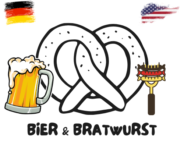
Intro
German Christmas Decorations: The Quirky, The Traditional, and The Just Plain Weird
If you thought American Christmas decorations were a spectacle of inflatable snowmen and a dizzying array of twinkling lights, wait until you hear about the German approach to decking the halls. Germans have a knack for combining the delightful with the downright peculiar when it comes to Christmas tree traditions. So buckle up and let’s dive into some of the quirkiest, most traditional, and just plain weird German Christmas tree decorations.
1. Glass Ball Ornaments
Let’s start with the OG of German Christmas decorations: the glass ball ornament. Born in the 19th century in the quaint town of Lauscha, these glass balls have evolved from a local craft to an international holiday staple. Lauscha, Germany is the birthplace of the Christmas ball ornament, a tradition that began in the 19th century. . Initially, these glass balls were handmade by skilled artisans, each piece a delicate masterpiece designed to reflect the flickering candlelight of Christmas trees.
But the story doesn’t end there. After World War II, the glassblowing industry in Lauscha faced quite the struggle under Soviet rule in East Germany. Yet, the resilient spirit of the Lauschan glassblowers shone through, and the craft survived and was handed down through generations even under the challenges posed by Soviet rule in East Germany after the Second World War. . Today, you can still find these beautiful ornaments gracing trees worldwide, proving that a little glass ball can have a lot of staying power.

2. Tinsel Hallelujah
Next up, we have tinsel—another German gift to the world of Christmas decor. The shiny, stringy stuff was originally made of real silver, believe it or not. Imagine explaining that budgetary decision to your spouse today! “Honey, I think we need some silver to throw on the tree this year.” Yeah, no. But in the 17th century, tinsel was all the rage, adding a touch of shimmering elegance to the Christmas tree. Over the years, practicality took over, and tinsel evolved into the affordable plastic variety we all know and love—perfect for creating that ‘icy’ look without causing a financial meltdown.
3. The Pickle Ornament

This one’s a doozy and probably the weirdest of the bunch. Legend has it that Germans hide a pickle ornament somewhere on the tree, and the first child to find it on Christmas morning gets an extra present. However, the funny thing is that most Germans have never heard of this tradition! It’s likely an American invention with a quirky, German-themed twist. Nonetheless, it’s become a beloved holiday oddity, often prompting confused looks from actual Germans. So, if you want to add a bit of whimsy (and a head-scratcher) to your tree, go ahead and tuck a pickle into those branches.
4. Candles ala Natural

Before the days of electric lights and LED extravaganzas, Germans used real candles to light their Christmas trees. Yes, you read that correctly—real, fire-hazard-inducing candles. Imagine the sheer bravery (or utter madness) of lighting a dozen tiny flames on a tree made of highly flammable pine needles. But back in the day, it was the ultimate way to create a cozy, festive atmosphere. Today, most folks opt for safer LED versions that mimic the warm glow of real candles, leaving the actual flames to the experts. Still, the tradition of candle-lit trees lives on in our collective holiday imagination.
5. Straw Ornaments
Going back to the more traditional side of things, straw ornaments are a staple in many German households. These handmade decorations often come in intricate shapes like stars, angels, and animals, adding a rustic, natural touch to the tree. The use of straw harkens back to simpler times, when decorations were made from whatever materials were readily available. It’s a charming nod to the past and a way to keep ancient craftsmanship alive in the modern age.
And let’s not forget where all this glassmaking magic happens. The Thuringian Forest provides abundant raw materials for Lauscha’s glassmaking industry, including sand, wood ash, and lime. . So, next time you hang that delicate glass ball or admire your twinkling tinsel, spare a thought for the lush Thuringian Forest that supplies the essentials for these time-honored decorations.
So there you have it: German Christmas tree traditions that range from the exquisitely beautiful to the downright odd. Whether you’re a fan of the classic glass ball or intrigued by the mystery of the pickle ornament, there’s something for everyone. Just remember to keep those candles LED, unless you’re feeling particularly adventurous (and have a fire extinguisher handy).
In the end, it’s all about celebrating in a way that brings joy and laughter, even if it means explaining to your friends why there’s a pickle hanging in your tree. Happy decorating!
